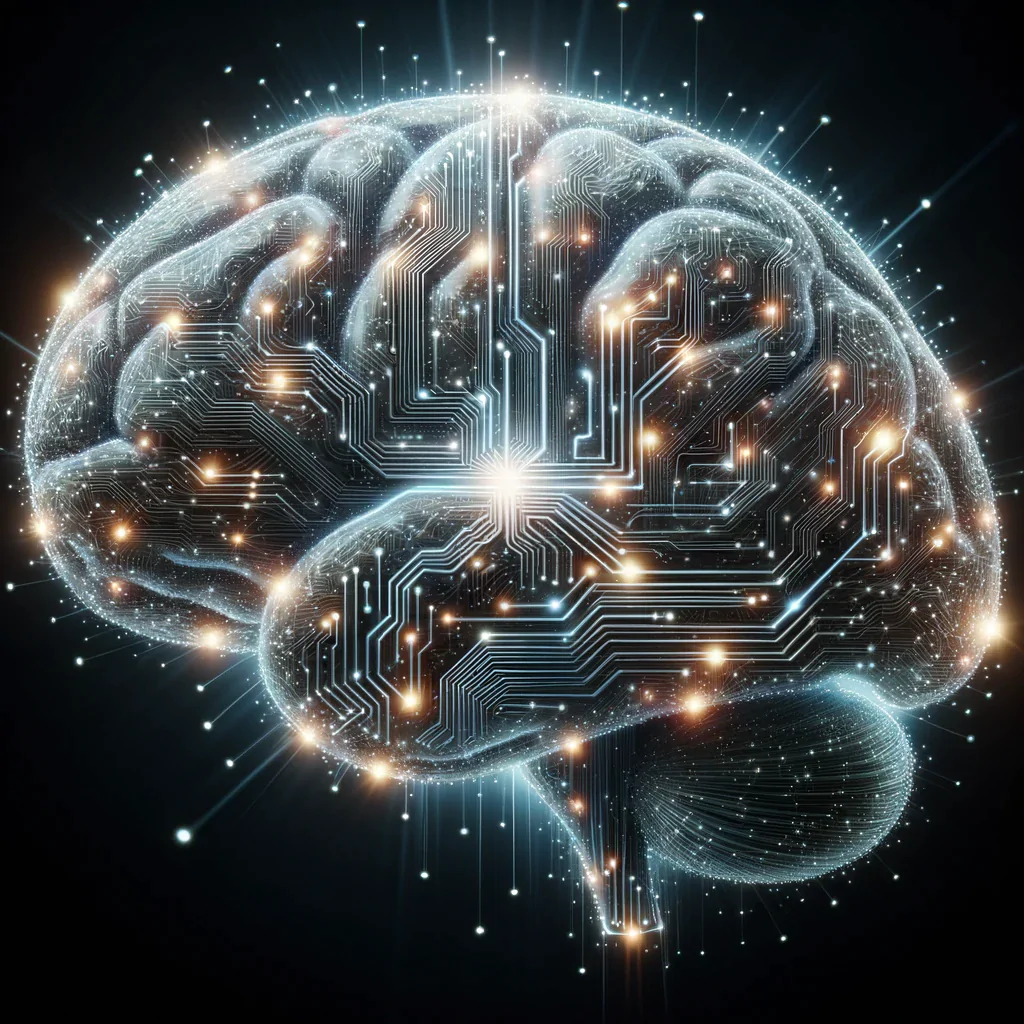AI’s integration into CAD software facilitates a transformative shift towards more intuitive, efficient design workflows. By analysing requirements and automatically generating precise 2D and 3D CAD drawings, AI accelerates the design process, reduces errors, and allows for rapid prototyping. This article explores the multifaceted benefits of AI in CAD automation processes.
The following tables highlights the impact of Artificial Intelligence (AI) on CAD automation, complementing the text on how AI is revolutionizing CAD processes:
| Aspect | Benefit |
| Productivity Improvement | AI-driven workflows enhance productivity by up to 66%, significantly boosting efficiency in CAD automation. |
| Personalisation and Efficiency | AI personalises CAD software experiences, improving productivity by adapting to user behaviours and preferences. |
| Design and Analysis Automation | AI accelerates design and analysis, streamlining 2D and 3D drawing generation and reducing repetitive tasks for greater efficiency and accuracy. |
| Enhanced CAD Manufacturing | AI optimises manufacturing processes, leading to better design quality, reduced costs, and more efficient product development. |
| Quality of Work | AI significantly improves work output quality, especially in document composition where AI assistance results in higher quality outcomes. |
| Narrowing Skill Gaps | AI reduces performance disparities between employees, especially benefiting those with lower initial performance, thus narrowing skill gaps. |
| BIM (Building Information Modelling) | AI in BIM solutions automates object classification, enhances project management, and improves safety and risk mitigation for better outcomes. |
These benefits highlight the transformative effect of AI on CAD automation, underscoring improvements in productivity, design quality, and efficiency, as well as the potential for personalisation and skill development within the CAD design and manufacturing landscapes.
Related Read: How to Get a Quote for Software Development Services?

TL;DR: Key Takeaways
This article explores the significant impact of artificial intelligence (AI) on Computer-Aided Design (CAD) automation, discussing the role of AI in enhancing CAD processes, the advantages over traditional methods, and the anticipated future innovations in CAD software driven by AI.
- AI significantly boosts CAD process efficiency and accuracy.
- Compares AI-driven automation with conventional CAD methods.
- Forecasts AI’s role in future CAD software developments.
- Highlights the importance of AI in revolutionizing CAD workflows.
The intersection of artificial intelligence (AI) and Computer-Aided Design (CAD) is not just an evolution—it’s a revolution in design. Read the full article for a deeper understanding of this exciting domain!
How is Artificial Intelligence Software Improving CAD Automation?

What Is the Role of Artificial Intelligence in CAD?
Artificial Intelligence (AI) significantly enhances CAD automation by streamlining design processes, improving accuracy, and enabling more sophisticated simulations. AI algorithms assist in interpreting and transforming initial design concepts into detailed CAD models, reducing manual effort and increasing efficiency.
AI in CAD supports designers by automating routine tasks, such as generating geometric shapes or optimising material usage, allowing for more focus on creative aspects. Advanced AI systems can analyse design constraints and requirements to suggest improvements, facilitating a more intuitive design experience.
Benefits of AI in CAD:
- Automated Design Tasks: Streamlines repetitive tasks, enhancing productivity.
- Enhanced Accuracy: AI algorithms reduce human error, improving design precision.
- Optimised Solutions: AI evaluates numerous design variations to find the most efficient solutions.
- Predictive Analysis: AI tools predict potential design flaws, enabling pre-emptive corrections.
In summary, AI’s role in CAD is transformative, offering substantial improvements in efficiency, accuracy, and creativity. As demonstrated by platforms like Futura3D, AI is not just an auxiliary tool but a fundamental component redefining CAD automation.
How Does Artificial Intelligence Enhance CAD Automation?
Artificial Intelligence (AI) elevates CAD automation by introducing intelligent decision-making, predictive analysis, and advanced simulation capabilities. These technologies allow for rapid prototyping, error reduction, and the ability to handle complex design requirements efficiently.
Incorporating AI into CAD automation transforms the design process by enabling software to learn from past designs, suggest optimisations, and automate tasks that traditionally require manual intervention. This not only speeds up the design cycle but also ensures higher accuracy and innovation in the final product.
Comparison of Design Processes:
| Process Type | Time Efficiency | Accuracy | Innovation Potential | Complexity Handling |
| Manual Process | Low | Moderate | Low | Low |
| CAD Automation | Moderate | High | Moderate | Moderate |
| CAD Automation + AI | High | Very High | High | High |
This table illustrates the substantial benefits of integrating AI with CAD automation. AI-enhanced CAD systems significantly outperform traditional methods by offering faster completion times, improved accuracy, and the ability to innovate and manage complexity effectively.
AI’s integration into CAD automation represents a pivotal advancement, pushing the boundaries of what is possible in design and engineering.

Can AI Replace Traditional CAD Processes?
AI is not about replacing traditional CAD processes but augmenting and streamlining them. It introduces efficiencies and capabilities that were previously unattainable, making the design process faster, more accurate, and capable of handling complex scenarios that manual processes cannot.
AI enhances CAD by automating time-consuming tasks, applying predictive analytics to foresee design issues, and enabling generative design, where multiple design alternatives can be explored quickly. This synergy between AI and traditional CAD processes leads to a more refined, innovative, and efficient design workflow.
AI vs. Traditional CAD: Key Differences
- Efficiency: AI significantly reduces the time needed for design tasks.
- Accuracy: AI algorithms minimize errors through predictive analytics.
- Complexity: AI can manage and simplify complex design processes.
- Innovation: AI opens up new possibilities for creative design solutions.
AI’s role is to complement and enhance the capabilities of traditional CAD systems, making it an invaluable tool in the arsenal of designers and engineers. The future of CAD is one where AI and human expertise work hand in hand to push the boundaries of design and innovation.


Discuss Your Project Today
Can AI Replace Traditional CAD Processes?
By leveraging AI, it is possible to transform how designs are conceptualised and realised. For example, here at Software Development UK we are integrating our Futura3D platform with AI to deliver next-gen CAD automation experiences:
- AI-Enhanced Design Interpretation: Utilising AI, we are experimenting by interpret floor plans and design documents for buildings, to automatically recreate accurate 2D and 3D models. This process dramatically accelerates the design phase, reducing manual input and increasing precision.
- Intelligent Product Configurators: Our use of AI and GPT technologies enables the creation of dynamic product configurators. Customers can describe their requirements in natural language, and our AI system intelligently generates the desired product designs within our CAD framework.
These advancements showcase how AI can complement and enhance traditional CAD methods. By integrating AI into CAD processes, we at Software Development UK are not only streamlining design workflows but also opening up new possibilities for creativity and efficiency. AI in CAD, as demonstrated by our Futura3D platform, represents a leap forward in design technology, making it an essential tool for the future of engineering and architecture.
The Future of CAD Software: AI-Powered Innovations
The future of CAD software is set to be revolutionised by AI-powered innovations, leading to smarter, more efficient design tools. AI is expected to bring about a new era in CAD with features such as predictive design, where software can anticipate user modifications and suggest optimal design paths. Real-time collaboration tools powered by AI will enhance team productivity, and augmented reality (AR) integrations will allow for immersive design experiences. Additionally, natural language processing (NLP) will enable designers to interact with CAD software using conversational commands, further simplifying the design process.
Key Innovations on the Horizon:
- Predictive Design: AI algorithms will predict user needs, offering intelligent suggestions.
- AR for Design Visualisation: Immersive AR technologies for real-time, 3D design visualisation.
- NLP Interfaces: Simplified design processes through voice and text commands.
These advancements signify a shift towards more intuitive, adaptable, and powerful CAD tools, making the design process more accessible and efficient. As CAD software evolves, the integration of AI will undoubtedly unlock new possibilities for creativity and innovation in the field.

Need Expert Guidance?
We provide fully managed end-to-end solutions for operators and service companies needing expert guidance.
Take advantage of our unique {SD:UK} CTO as a Service solution. Our experts help you to formally capture requirements, create a system specification and then fully manage the implementation of your project for a successfull delivery.


Embracing the Future: AI-Driven CAD and Visualisation at Software Development UK
As we look towards the future, it’s clear that AI and advanced CAD/visualisation workflows are poised to revolutionise industries far and wide. From architectural design to product development and beyond, these technologies offer the promise of unparalleled efficiency, accuracy, and creativity. Examples abound, from automating the drafting of complex building structures to enabling the rapid prototyping of innovative consumer products.
At Software Development UK, we stand at the vanguard of this exciting frontier, expertly navigating the intersection of AI, CAD, and visualisation. Our commitment to pushing the boundaries of these technologies not only enhances our productivity but also empowers our clients to achieve their visionary projects with cutting-edge precision and speed.
For those ready to explore how AI-enhanced CAD and visualisation can transform their work, Software Development UK offers a free consultation. Reach out to us to discover how our expertise can bring your projects to life, setting a new standard for what’s possible in your industry.
Further Reading
For those interested in going deeper into the intersection of artificial intelligence and computer-aided design, here are five recommended books to further your understanding and knowledge:
- “Artificial Intelligence in Practice: How 50 Successful Companies Used AI and Machine Learning to Solve Problems” by Bernard Marr – A comprehensive look at how various industries, including design and engineering, are applying AI.
- “CAD and Robotics in Architecture and Construction” edited by Maver, Petric, and Dokonal – Offers insights into the early integration of robotics and CAD, providing foundational knowledge relevant to today’s AI advancements.
- “Parametric Building Design Using Autodesk Maya” by Ming Tang – Though focused on Autodesk Maya, this book delves into parametric design, a concept central to AI in CAD.
- “Digital Fabrication in Architecture, Engineering and Construction” by Luca Caneparo – Explores digital fabrication technologies driven by CAD and AI, highlighting their impact on construction and architecture.
- “Machine Learning for Designers” by Patrick Hebron – Provides an accessible introduction to machine learning concepts for designers, applicable in understanding AI’s role in CAD automation.
These books cover a range of topics from practical applications of AI in various sectors to specific technologies and methodologies related to AI and CAD, offering valuable insights for professionals and enthusiasts alike.
Frequently Asked Questions
Provided below is an FAQ to help you understand our services in more detail. If your question is not covered please feel free contact us.
AI can significantly automate the creation of CAD models, but human oversight is often required to ensure the models meet specific design standards and functional requirements.
While AI enhances CAD capabilities, it may be limited by data quality, computational resources, and the complexity of design tasks that require nuanced human judgment.
AI uses machine learning algorithms trained on vast datasets of design patterns and rules to interpret and predict design intent from user inputs or modifications.
Yes, AI can analyse materials and design efficiencies to recommend solutions that minimize waste and energy consumption, thereby supporting sustainable design practices.
Ethical considerations may arise regarding data privacy, intellectual property rights, and the displacement of jobs, necessitating transparent and responsible use of AI in CAD.
AI can facilitate collaboration by automating routine tasks, enabling real-time design updates, and providing a platform for seamless communication among team members.
Professionals may need skills in data analysis, machine learning, and a solid understanding of both design principles and AI capabilities to effectively integrate AI into CAD workflows.
AI algorithms can predict potential design flaws and suggest modifications, significantly reducing errors and improving the overall quality of CAD models.

